What do you wear when you go hiking in the winter? Such a commonly asked question. Hiking doesn’t have to be reserved for the summer and good weather. You can get out all year long, including in the winter, and enjoy it too! You just need to make sure you are dressed for the weather.
Layering is key to hiking in the winter. It allows you to shed layers as you work up a sweat and warm up. And then add them back on when the temperature drops. You want to do your best to stay and a comfortable temperature so you don’t sweat. If you aren’t able to dry off, this can lead to hypothermia. I’m going to talk about other ways to stay safe even if you do get a little sweaty.
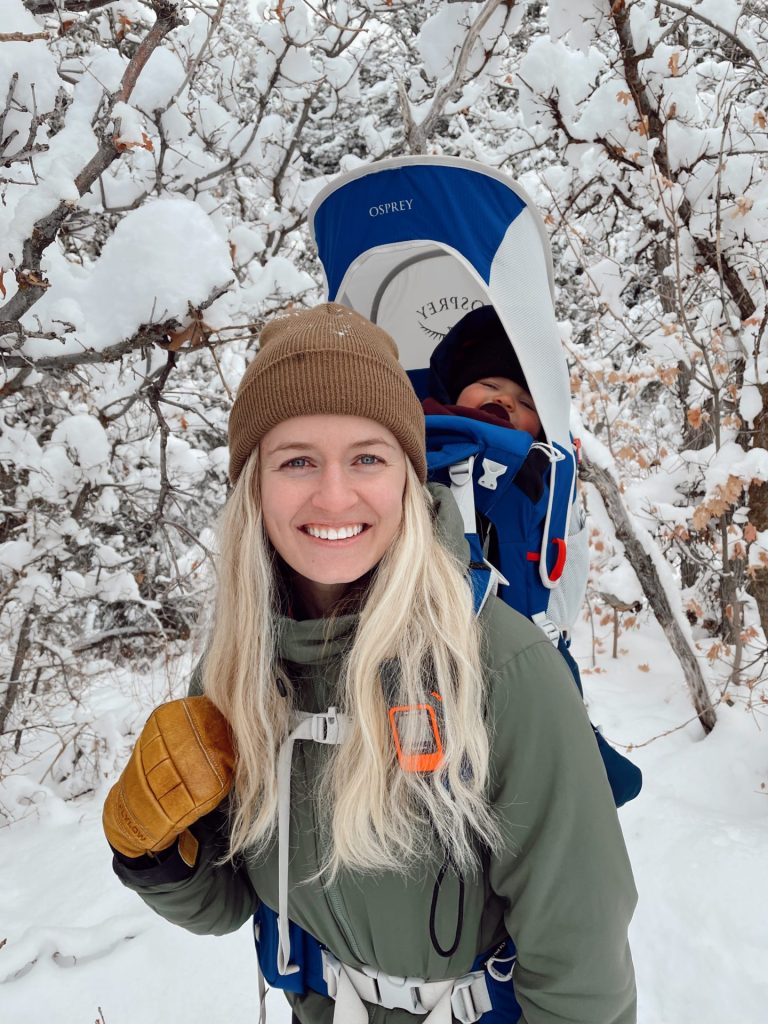
Base Layer
It’s so important to start with a non cotton base layer when you go hiking in the winter. My personal favorite are merino wool layers. Other good materials are polyester, bamboo, and other synthetic materials. Basically you want something that is going to wick away moisture.
The reason you don’t want to wear cotton is because if it gets wet, either from sweat or other natural elements, it holds onto the moisture. You stay wet and cold and when you’re wet and cold in freezing temperatures, it can lead to hypothermia. Best to just avoid cotton.
Mid Layer
I don’t always wear a mid layer. I will though when it’s really cold or if I won’t be doing a lot of elevation gain on my hike. My favorite mid layer is a fleece quarter zip. I have a couple old ones from Lands’ End (anyone still shop there??) that I usually wear.
I also like to wear a synthetic jacket. I often wear this as my top layer, but it’s intended to be worn as a mid layer. There are lots of options, you just want something that can be worn underneath you top jacket. And not to beat a dead horse, but you also don’t want this layer to be cotton.
Weather Proof Layer
If you’re going to be out hiking and there’s a chance of rain or snow, some kind of shell is always nice to have. This can be anything from a poncho, to a rain jacket, to a snow jacket. My personal favorite is a rain jacket because it’s lighter weight and easy to take on an off.
One thing to note about waterproof gear–it doesn’t breathe well so you will heat up more when you’re wearing it. This can be great if it’s colder than you expected and you throw your rain jacket or poncho on. But if you are exerting a lot of energy, there is nowhere for your body heat to go. So dress according to the weather and the kind of hike you are doing.

Extremities
Your head, hands, and feet are very important parts of your body to consider when you’re deciding what to wear when winter hiking. Nothing turns me around quite as quick on a hike as cold hands or feet.
Head
There’s a couple of options to keep your head and ears warm in the winter. I usually just throw on a beanie and call it good. But just like with any layer, you can get a little too warm and need to shed it. If you find that to be the case for you and you’re constantly taking your beanie off, try an ear covering. I have a merino wool Buff that I love and always have in my pack.
Hands
My hands personally are what I have the hardest time keeping warm. I’m not sure if it’s bad circulation or what but gloves do not work in keeping them warm enough. I am a mitten girl through and through. My personal favorite are by Flylow. I have the Smitty mitten which have a synthetic insulation so my hands stay plenty warm. Flylow has a ton of great models!
Feet
Footwear is a very personal decision because everyone has different shaped feet and foot ailments. I will just say this, in the winter it is very nice to have a waterproof boot that is mid or high rise and comfortable. I have the Hanwag Light Tatra Bunion are specifically designed for women who have a bunion and it is the greatest thing ever (too much information?).
As for socks, I always recommend wool socks. Smartwool and Darn Tough are two of my favorite brands. Wool helps retain heat even when wet. So if snow gets in your boots or you step into a creek, your feet will stay a little warmer because of the wool.
Winter Hiking Traction
Snowshoes and microspikes are the most common choice to navigate icy trails. Check out my Winter Hiking Essential Gear post if you want to read more on the differences between the two and which is the best option for you.

Every winter hike might be a little different and you may need to adjust what you wear depending on the day. But all of these layering options are important when dressing for your adventures out in the freezing temperatures. There is no reason to avoid getting out in the winter because of the harsh elements. If you prepare and know what to wear when you go hiking in the winter, you might find it’s your new favorite season to hike!

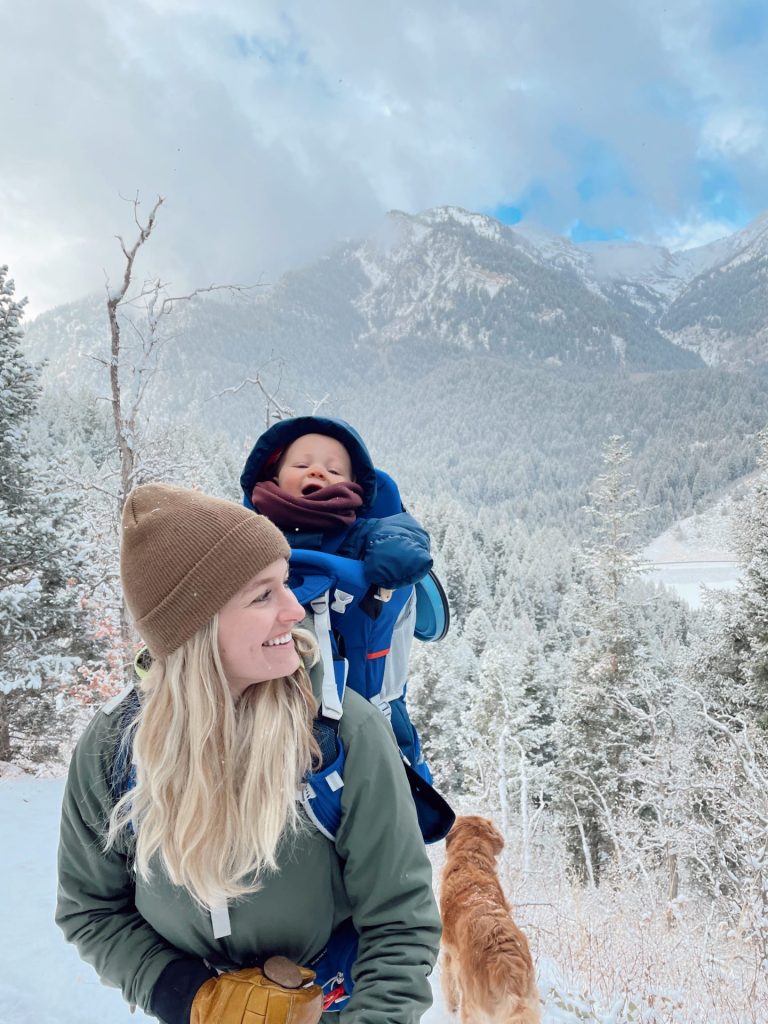
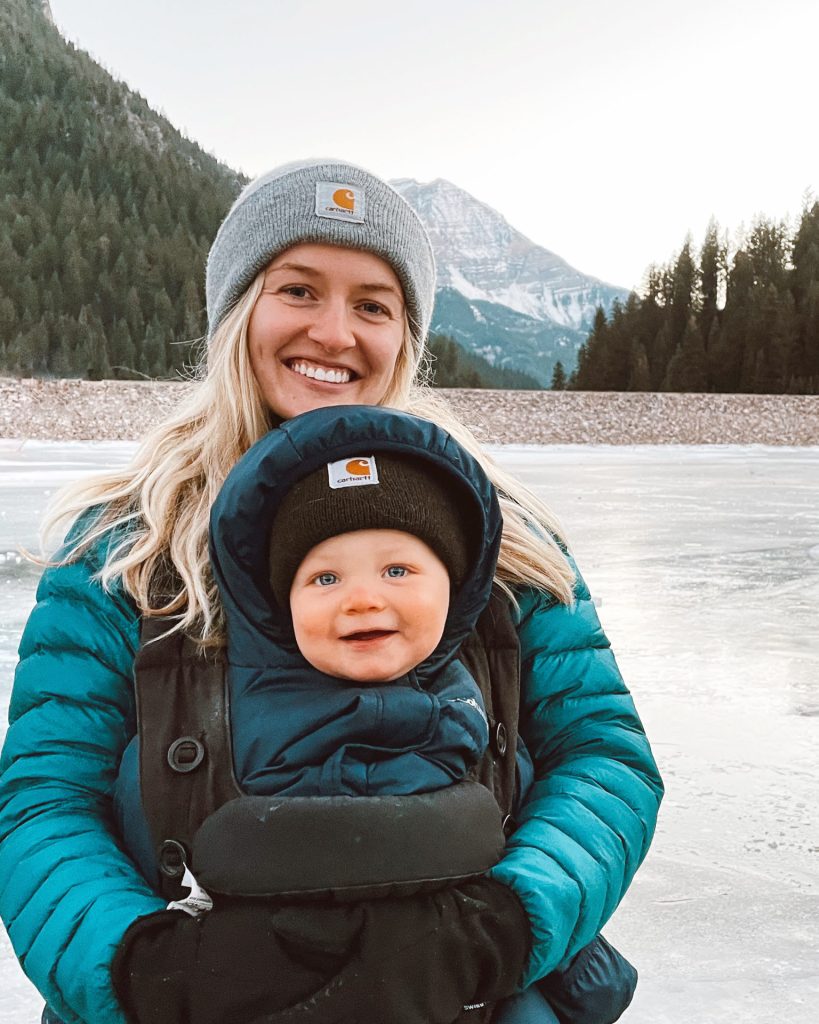
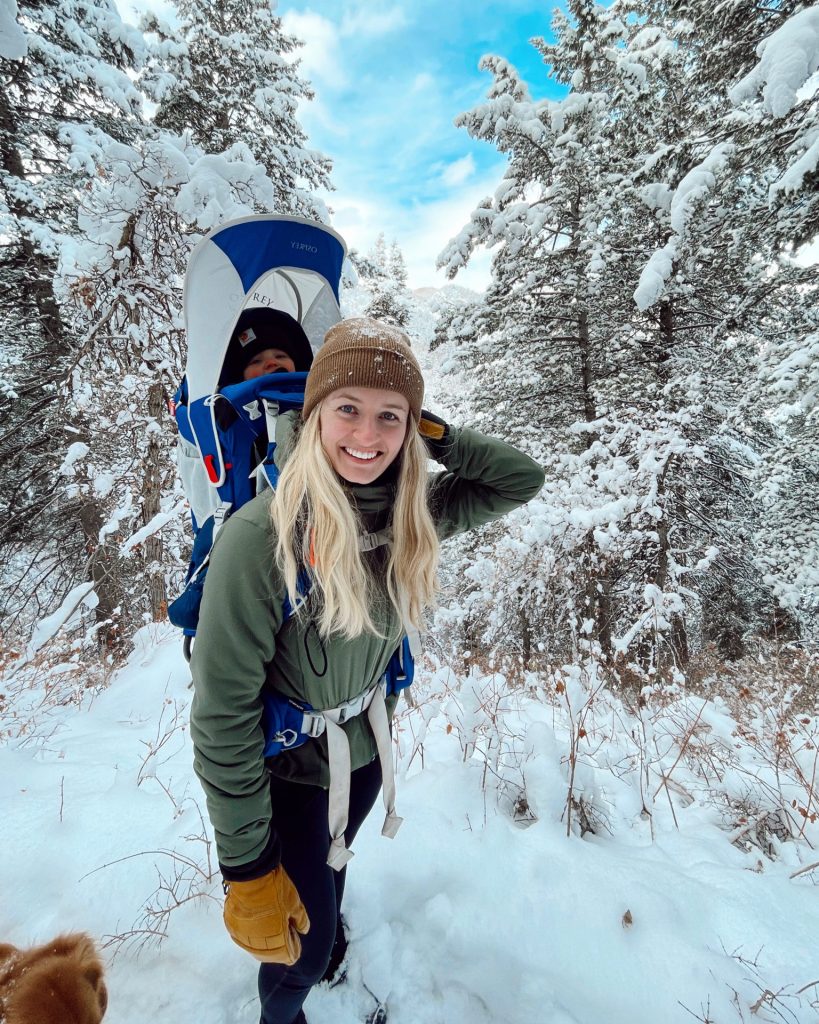
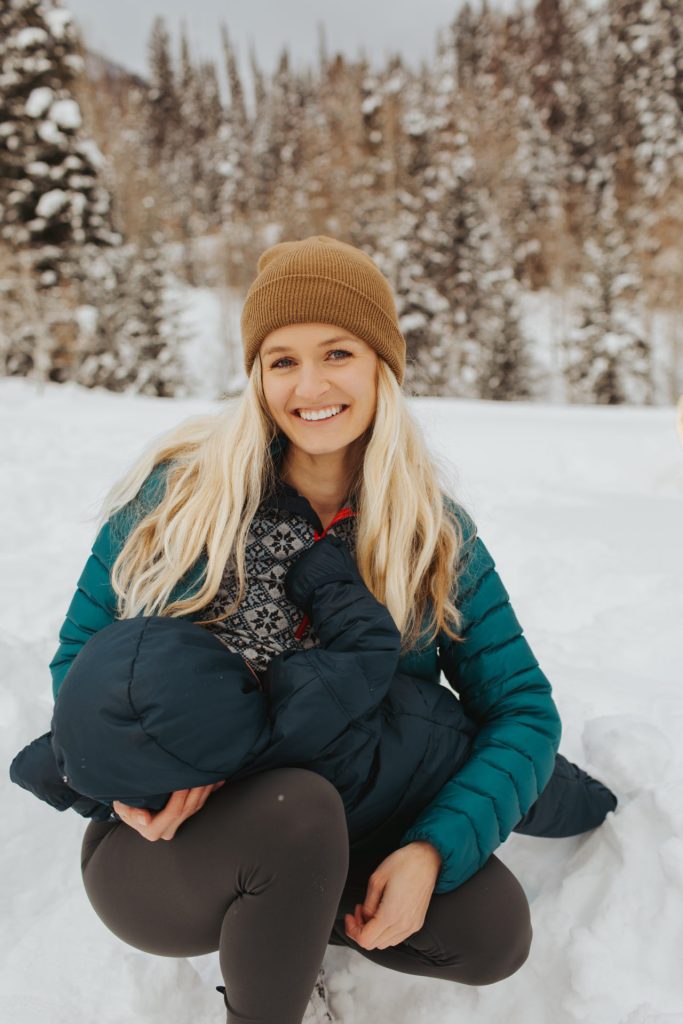

Pingback: How to Start Winter Hiking for Beginners -